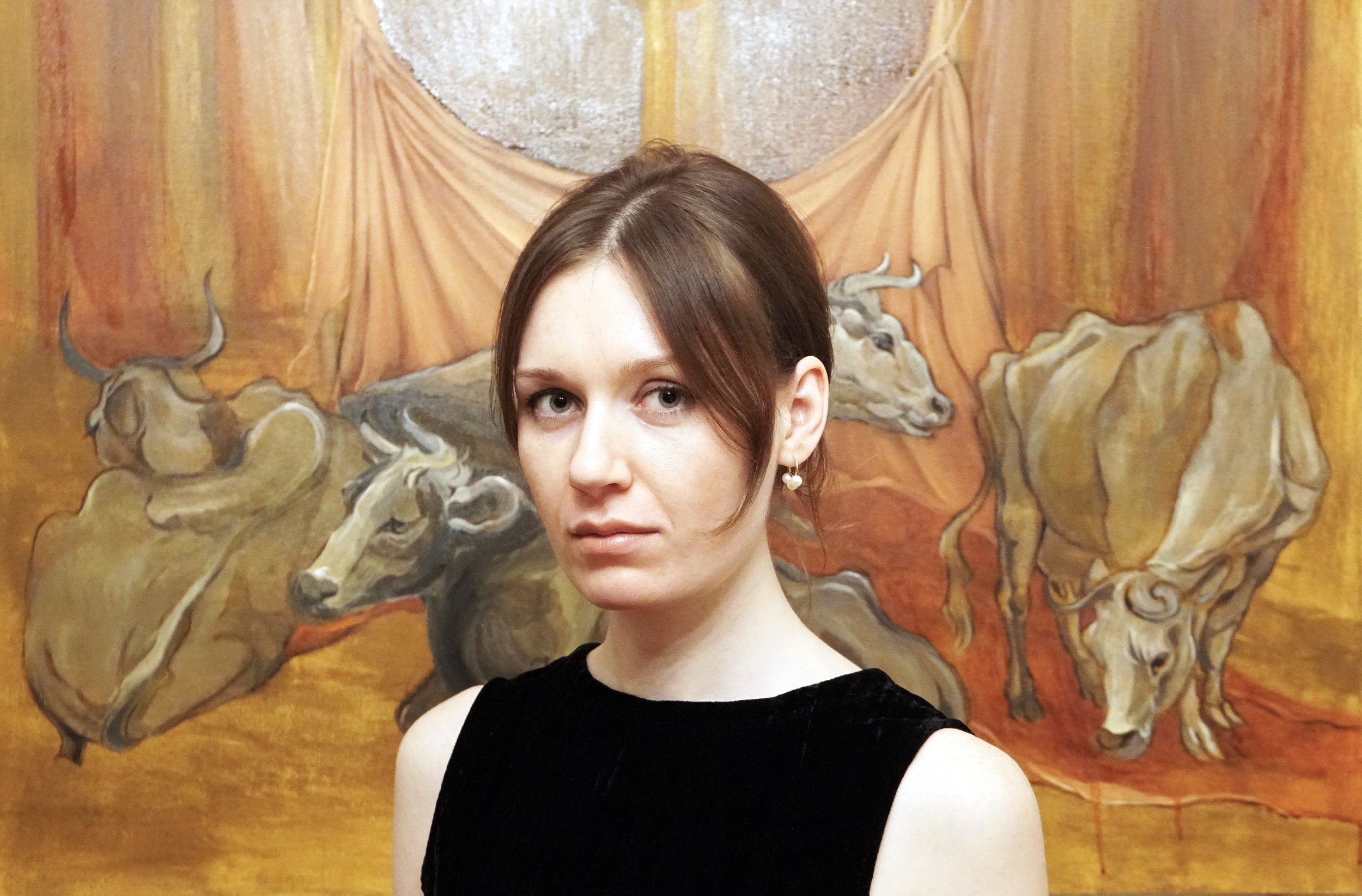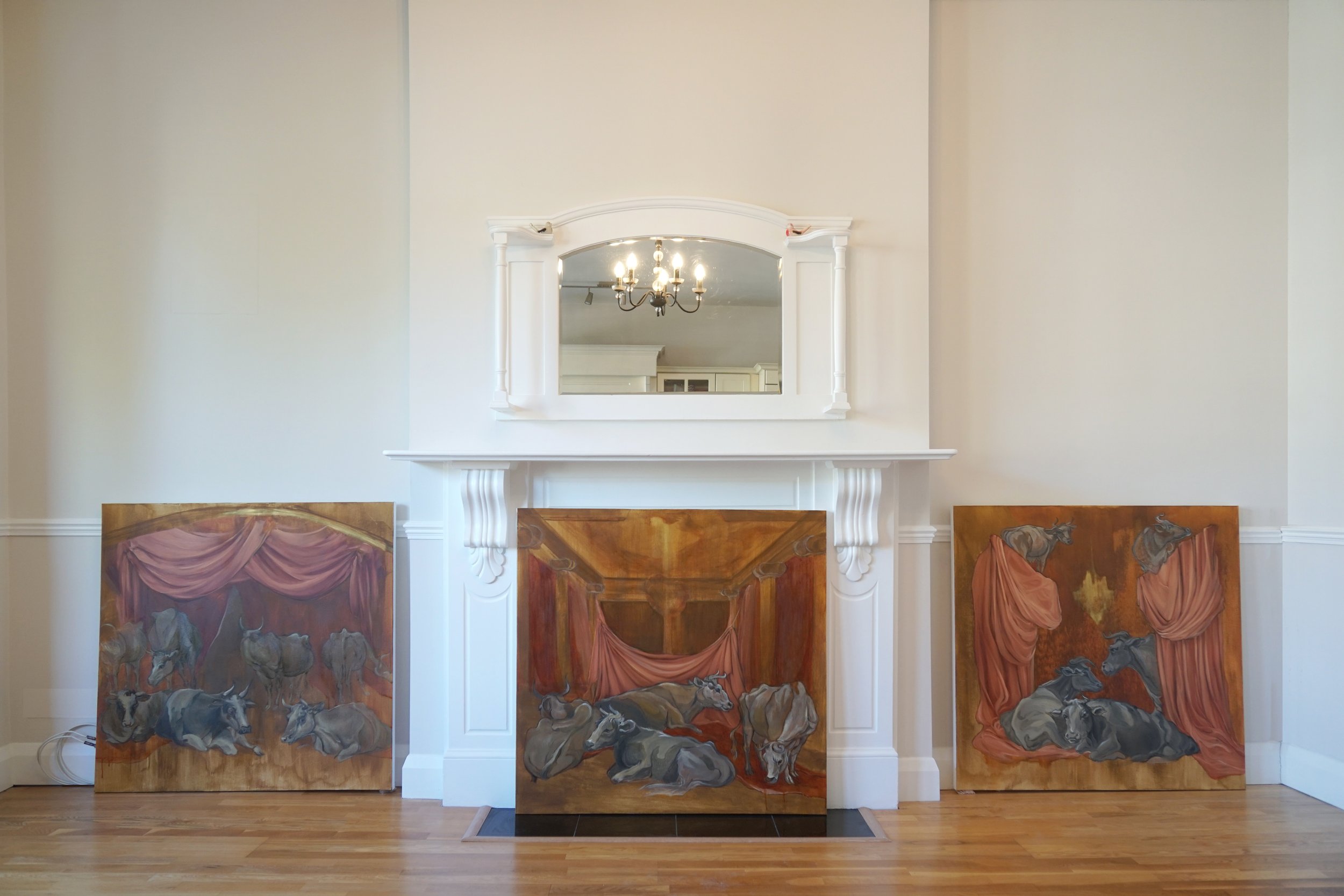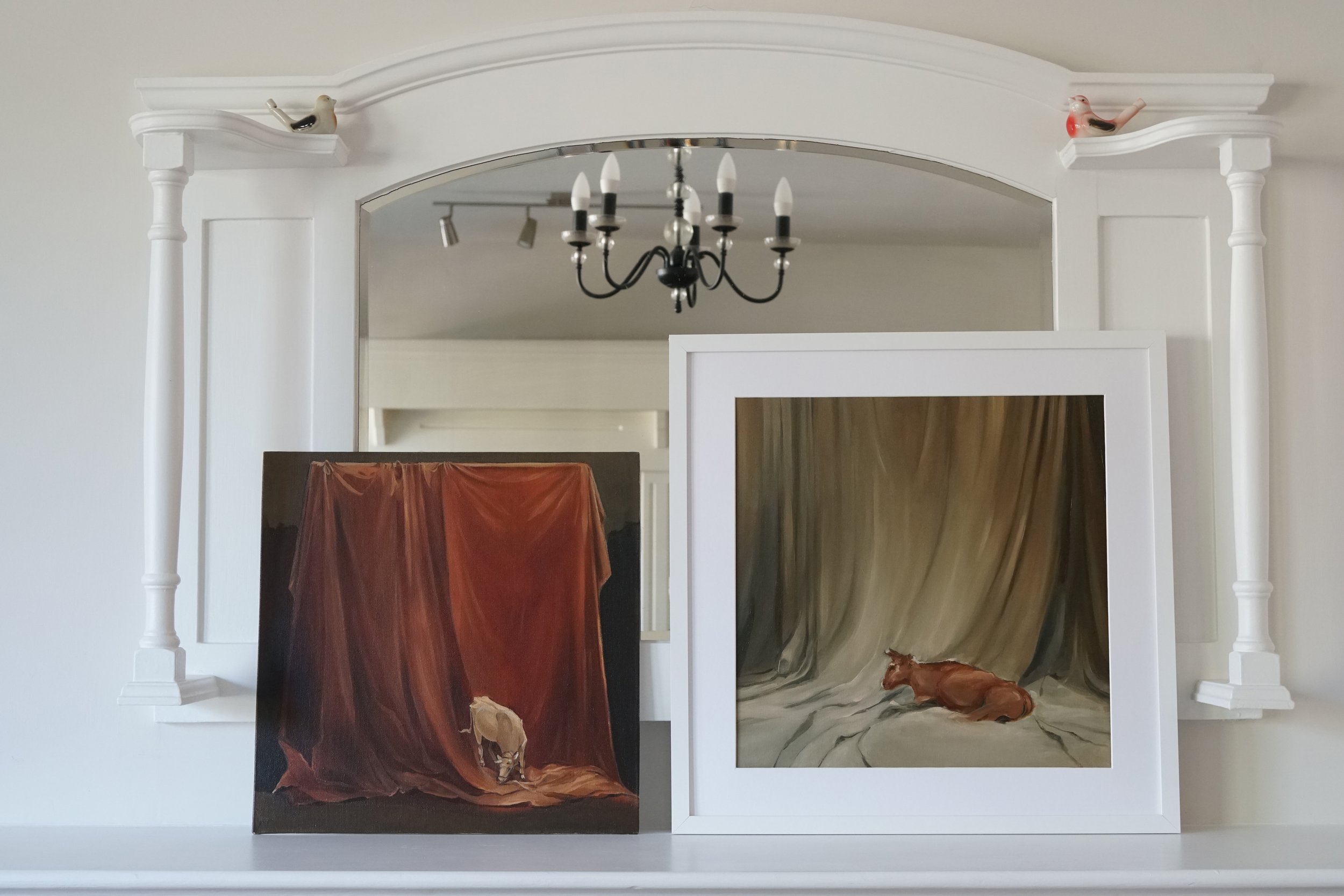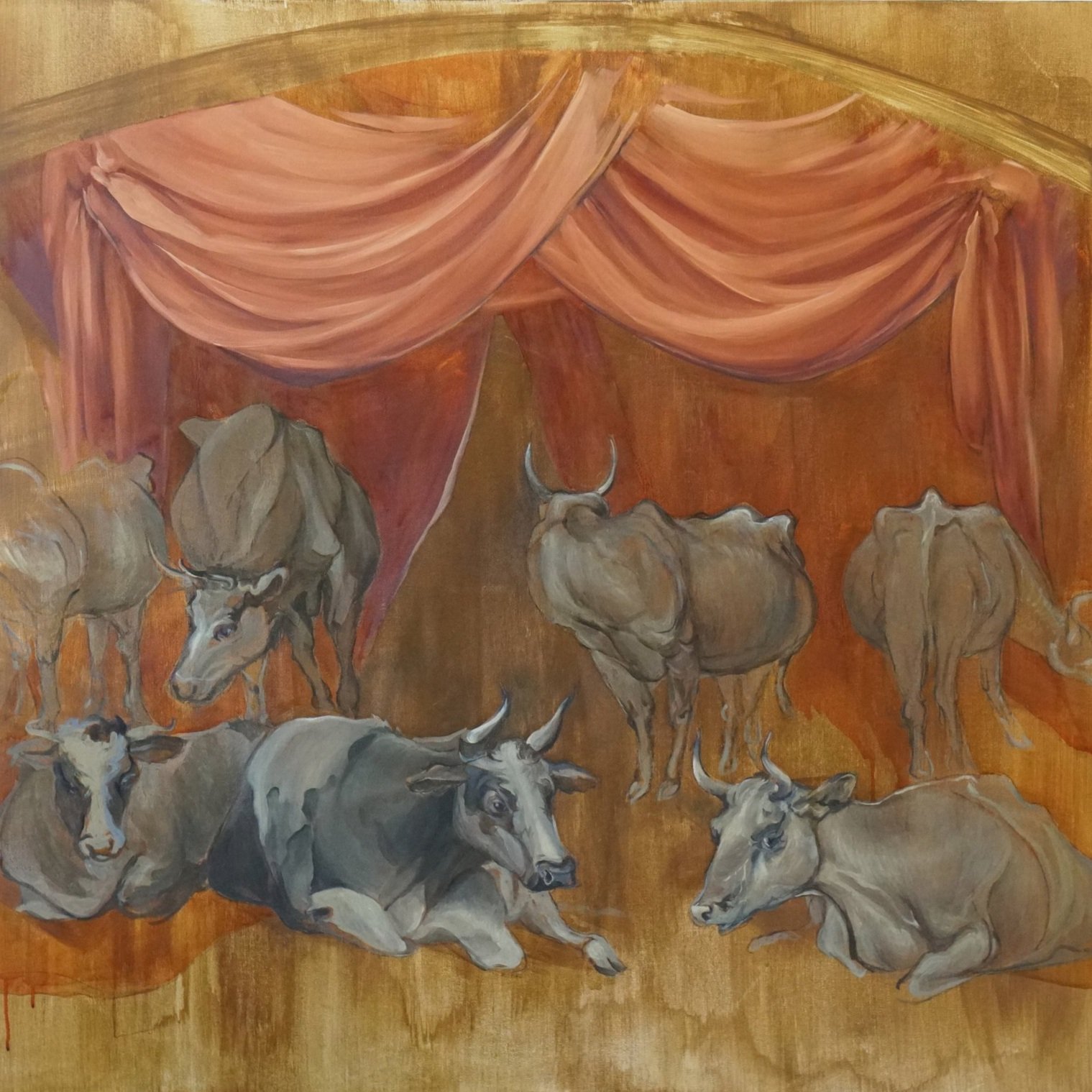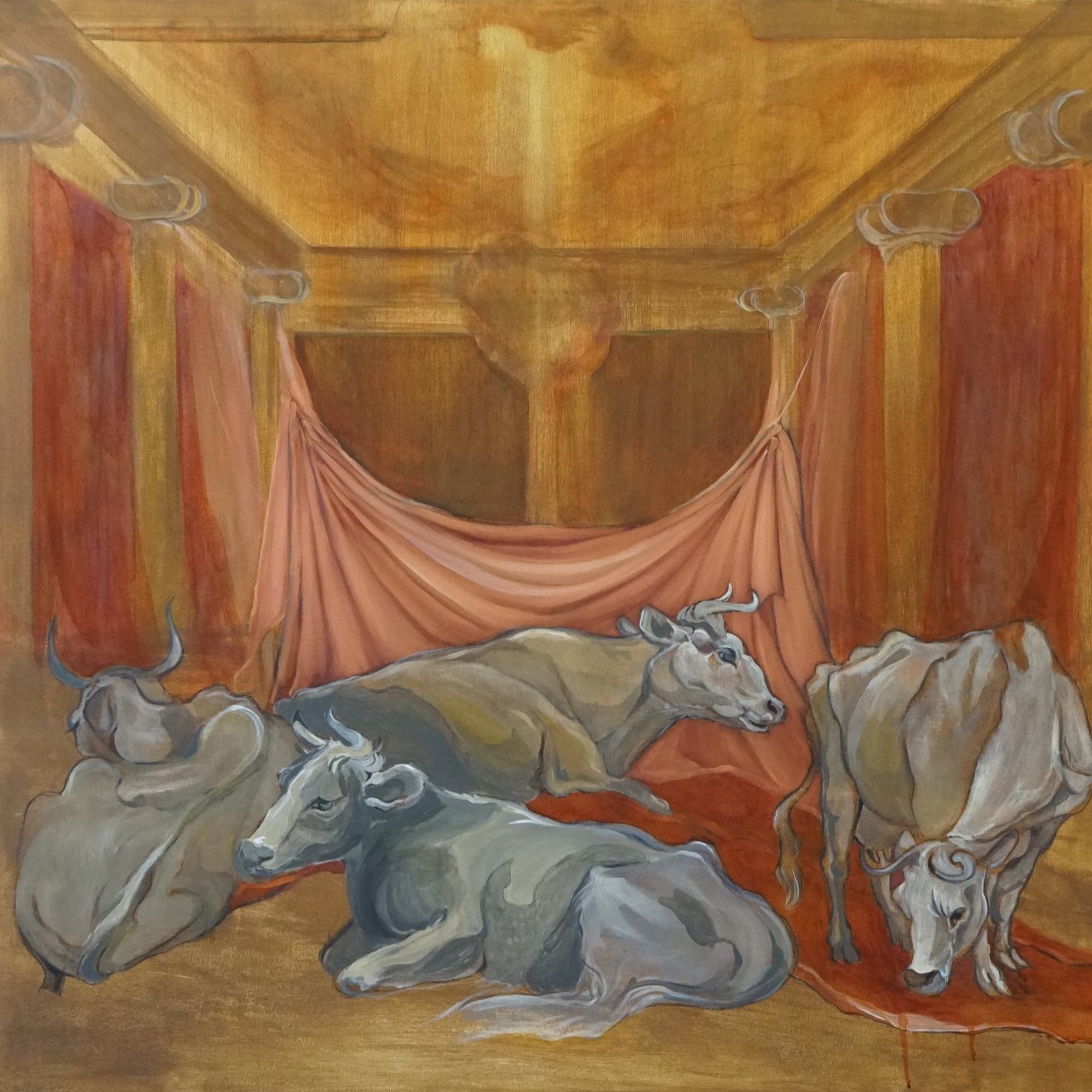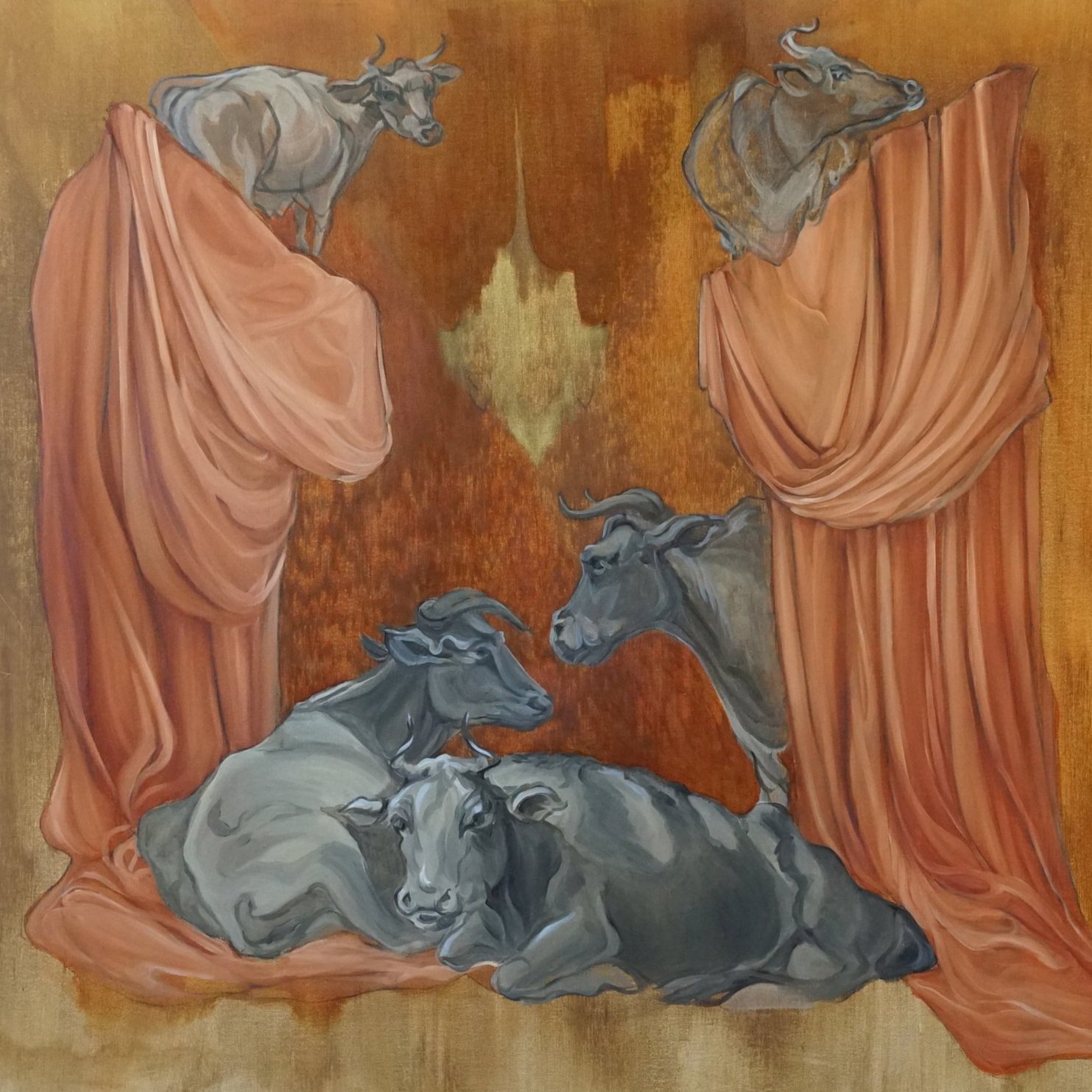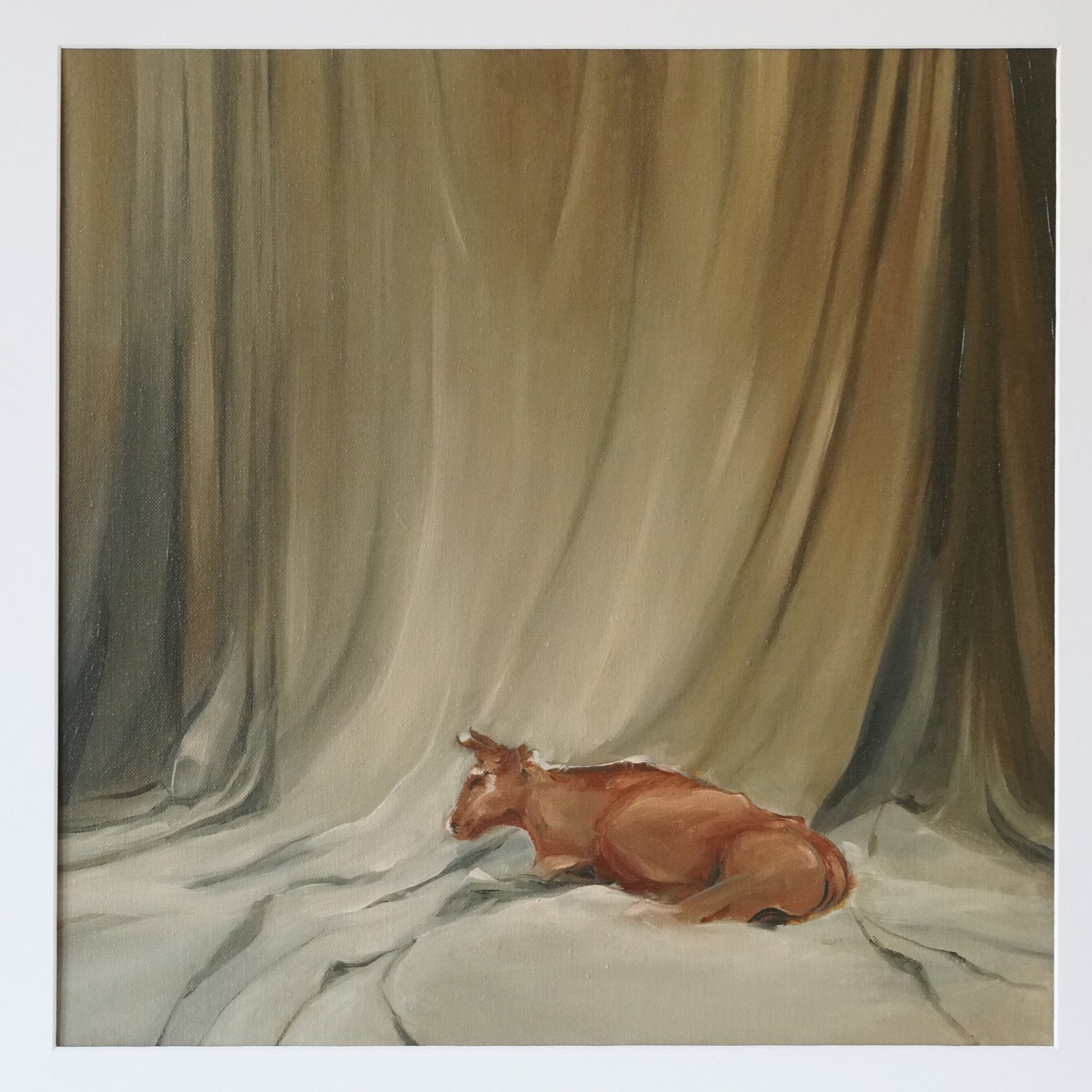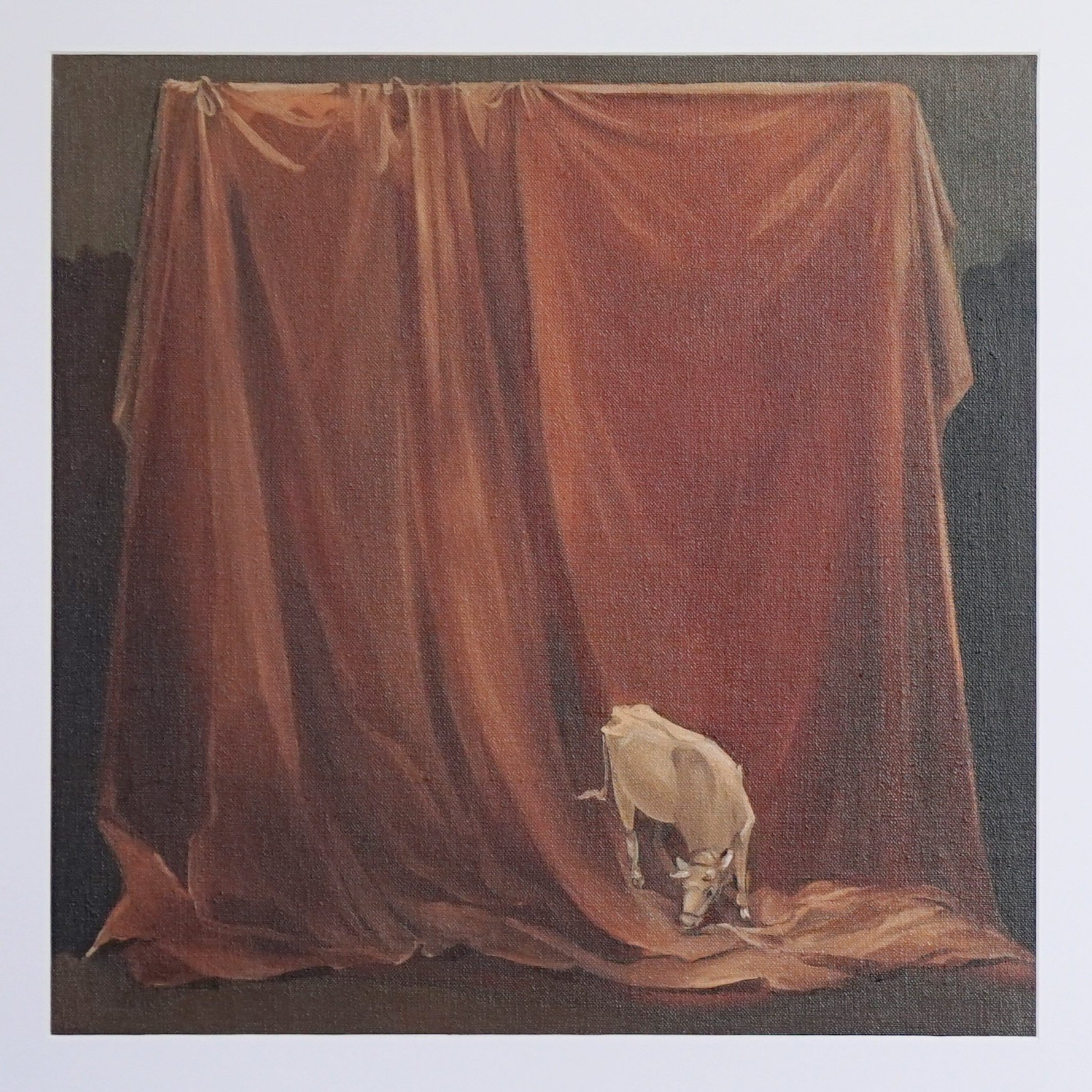Artist in conversation: Anna Kiparis
“Any good literature is canonical, having an ancient narrative code embedded within it”
Anna Kiparis, an artist whose work intertwines the historical depth of Christian painting with the narratives of classical world literature, revitalizing Russian icon painting traditions within a contemporary context. Her art serves as a conduit between ancient religious tales and modern artistic interpretations, deeply influenced by her upbringing during the USSR’s fall and the contemporary global crises that question the value of human life.
Kiparis employs imaginative literature, particularly magical realism, to bridge religious texts and contemporary identity search, creating a rich tapestry of symbolism that connects the sacred with the secular. Her use of non-human elements like plants, animals, and insects as symbols enriches her narrative, drawing on the tradition of depicting saints in iconography.
Inspired by the work of art theorist Dmitry Bulatov, her exploration transcends the aesthetic, probing the connections between the divine and earthly, individual and collective. Kiparis appreciates magical realism for its ability to "unpack reality," using simple yet profound natural behaviours as metaphors for complex societal and existential themes.
What initially inspired you to become an artist, and how did you develop your unique style?
Expressing human experience through art truly impacts the world and makes it a better place if the emotions are genuine. It influences people and initiates new processes. A significant source of inspiration for me is literature, as the highest form of art—at the core of any other classical and contemporary art, whether it's opera, ballet, theatre, or social media, there’s always a narrative.
In terms of subject matter, what themes or motifs do you frequently explore in your work, and what draws you to these topics?
I am an architect by education and have long discovered the ability to conceptualize text as space. When reading a book, a space forms in my mind where the plot unfolds; whether it's the description of a natural or fictional place, I reconstruct it in my paintings. In this way, I preserve my love for architecture in my creative work, and spatial thinking becomes the main engine for creating plots and atmospheres for my works.
Your unique approach to illustrating fiction takes inspiration from the style of Orthodox icons, creating a bridge between the religious and the literary through potent symbols and images. For instance, you have chosen cows in your applied series as a replacement for saints. Can you elaborate on the significance of cows in this context and how this choice enhances the connection between the spiritual and narrative elements of your work?
For me, a favorite book is akin to a Bible - we reread it repeatedly to return to a particular state of mind. Rereading a beloved book is like an actual performance, akin to prayer. Appropriating the text to oneself is a specific labor and courage directly comparable to the ability to trust a higher power. This has led me to explore world literature and why these texts do not leave us indifferent. Any good literature is canonical, having an ancient narrative code embedded within it. Take a vivid example, Harry Potter - there, you can see the dazzling character of God in the form of Dumbledore, contrary to absolute evil. Harry Potter is Jesus Christ, and Severus Snape is Judas, who plays the complex role of betrayal. In the works of magical realism that I am currently working on, I find biblical plots everywhere, and cows are one of the prominent symbols of my recent works. In the novel "The Autumn of the Patriarch" by Nobel Prize-winning Spanish novelist Gabriel Garcia Marquez, a vivid image of space emerges - the luxurious palace of the dictator, where he hides from the people’s wrath. People hesitate to enter the palace when he dies to see if anyone is alive inside. But nature begins to penetrate the deserted area, and cows come from nearby pastures, fascinated by the moss-covered carpets and curtains. Eventually, one reaches the palace balcony and appears to the people as a miracle. People understand that no one is alive inside if the animal gets there. As a bright transconfessional symbol, the cow becomes a miracle of salvation in my work. This way, I connect spirituality and narrative. Thus, you can see the darkened spaces of the palace and cows, regally lying on palace draperies. This presentation technique conveys the image of a religious painting filled with figures of saints in vestments, arranged in the sacred geometry of the frame. I often use gold and charcoal to convey the feeling of an ancient religious painting that has survived.
The Last Supper" series, 100 x 100 cm each
“Cow Grazing on Curtains” series, 40 x 40 cm each
Can you discuss a specific piece or project that challenged you as an artist, and how you overcome those challenges?
The main challenge is to create an effect where the technique conveys the sensation of a transitional space, balancing the narrative on the brink of the visible and the unseen. After all, we do not see these cows inside the palace in the plot, but only the one that appears on the balcony. What happens inside the palace remains a mystery, so one series is titled "The Last Supper," for example. It was genuinely challenging to translate these experiences into a technique—a quick underpainting layer that also serves as the ground layer. I fill the canvas with a single tone of burnt sienna and immediately establish the light-shadow relationships and composition on the wet base. This must happen very quickly, in an absolute trance; at that moment, I don’t listen to music or think about anything else; all my energy is focused on the connection between imagination and the thinking hand. The next stage is draperies and the figures of cows; they are detailed and resemble parts of icons that have survived over time, like figures and vestments of saints. My primary visual reference was the Orthodox icon of Andrei Rublev's Trinity and its appearance today.
How do you stay connected with other artists and keep up with new developments and trends in the art world?
My art is very inclusive and not intended for a large audience. It is meditative; it involves lengthy processes of reading a book and understanding my canvas through literature. I counterpose my art to trends that require only a "second to scroll." With my art, I aim to slow down time. That is why I am actively seeking opportunities to talk about my research and current work at critical evenings organized by galleries, for example, the Rupture Gallery, which I particularly admire. At such meetings, I find like-minded artists and enjoy challenging my ideas.
How do you incorporate feedback from critics and audiences into your artistic practice, and how do you balance this feedback with your own artistic intuition?
Every time I present my work, I understand that different viewers will perceive and interpret it in their unique ways. I welcome as much criticism as possible—not to follow every piece of advice verbatim, but to immerse myself in the flow of emotions and interpretations surrounding my works. This process allows me to merge with those who interact with my art, guiding my future path alongside my personal development, influenced by the intuitive connections shared with my audience.
How do you stay motivated and inspired despite any setbacks or creative blocks you may encounter?
Returning to what initially motivated me to become an artist, I channel anxiety into action, often turning to a new book. Within its pages, I invariably find inspiration for a new project. And if I find myself unable to create, there is always a book within reach to reignite my imagination.
How do you feel about exhibiting your artworks with The Holy Art Gallery?
I was instantly attracted to the gallery's name, humorously noting on social media that my "Holy Cows" had found their rightful place in "Holy Art." The experience was gratifying, with a vibrant flow of interest and feedback in an environment where my art felt perfectly at home.
Looking ahead, what are your long-term goals and aspirations as an artist, and how do you plan to achieve them?
I aim to deepen my understanding of both past and present writers through their literature, dreaming of connecting with more contemporary authors. These creators, attuned to the zeitgeist, act as prophets of our time, sensing and shaping the future. My goal is to collaborate closely with them, creating projects based on modern authors' works, meeting them personally, and jointly developing projects. By providing visual accompaniments to exhibitions, I hope to draw more people to their books, approaching my role as an illustrator to help audiences fully immerse themselves in the narratives and worlds of their selected readings.

